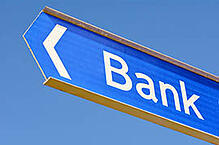 Bank profits have retreated from record levels, but experts say they could well be back to their record highs later this year.
Bank profits have retreated from record levels, but experts say they could well be back to their record highs later this year.
KPMG's latest Financial Institutions Performance Survey found the banking sector made a net profit of $1.15 billion in the December quarter, down from a record $1.25b in September.
However, the fall was mostly driven by accounting noise, particularly at ANZ and BNZ.
A loss made by TSB, which wrote off $53.9m worth of bonds in bailed-out coal miner Solid Energy, also weighed on the result.
However, the underlying numbers across the sector were positive, with total lending up 1.5 per cent to $331b, the largest quarterly increase in two years.
Despite intense competition, the average net interest margin representing the difference between the cost of borrowing and lending also rose slightly to 2.34 per cent.
Massey University banking expert David Tripe said some banks had been maintaining margins by moving slowly to pass on reductions in their funding costs.
"They're not being put under as much pressure as they could be," he said.
Tripe said mortgage customers should "put the hard word" on banks and be sure to ask for a discount on advertised interest rates.
"It's certainly not clear that there is no competition; it's just not necessarily biting into some [banks] as much as it might," he said.
KPMG head of financial services John Kensington said it was no surprise profits had eased back from the "stonking" September quarter.
However, he said it was likely the industry's strong profitability would remain for the near future, with reasonably good economic conditions and stable interest rates.
"I think you could see another record quarter [in 2015], yes."
The key factors to watch would be profit margins and provisioning for bad debts, he said.
Kensington said competition was likely to remain heated, and banks would continue plying customers for their business.
"Whether it's paying valuation fees, cash incentives, or an iPad, they'll still do that."
Longer-term there could be a squeeze on margins if competition intensified, and people continued to move from floating mortgages to less profitable fixed rates, he said.
Bad debt provisions were also likely to return to more normal levels as both lending books grew and companies borrowing money struggled with growing pains.
Kensington said the banking industry's success was generally a good sign for the economy, suggesting businesses were gearing up for growth.
"The economy is in reasonable shape, the dark days of the GFC are over," he said.
.png)




.png?width=200&height=100&name=RE%20Investar-Logo-MRI_Colour%20web%20229x115px%20(1).png)